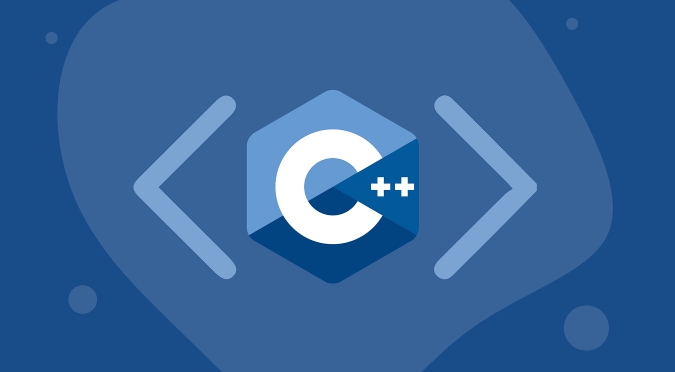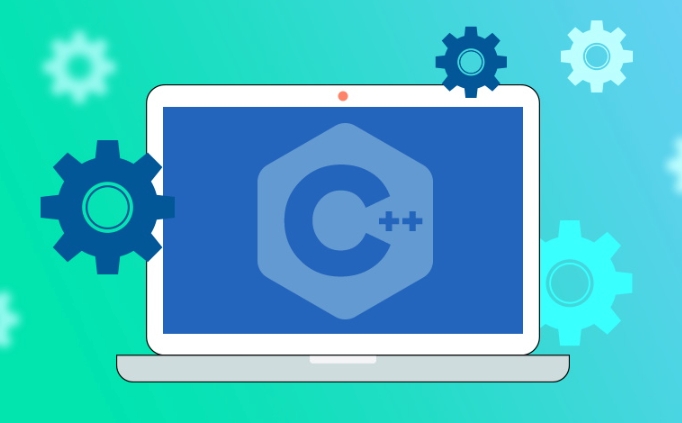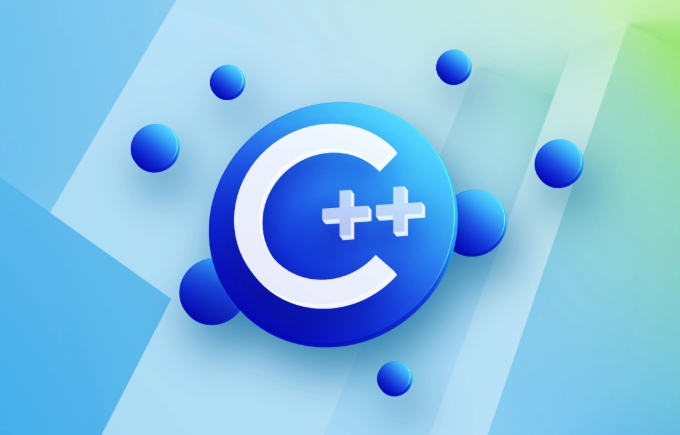RAII is an important technology used in resource management in C. Its core lies in automatically managing resources through the object life cycle. Its core idea is: resources are acquired at construction time and released at destruction, thereby avoiding leakage problems caused by manual release. For example, when there is no RAII, the file operation requires manually calling fclose. If there is an error in the middle or return in advance, you may forget to close the file; and after using RAII, such as the FileHandle class encapsulates the file operation, the destructor will be automatically called after leaving the scope to release the resource. 1. RAII is applied to lock management (such as std::lock_guard), 2. Memory management (such as std::unique_ptr), 3. Database and network connection management and other scenarios. Notes when writing RAII classes: 1. Do not release resources manually, 2. Disable copying or implement deep copying to prevent repeated releases, 3. The constructor needs to handle the failure of resource application to ensure exception security. Mastering RAII can effectively improve code robustness.

RAII (Resource Acquisition Is Initialization) is a very important programming technology in C. The core idea is to use the life cycle of objects to manage the acquisition and release of resources . Simply put: resources are obtained during object construction and released during object destruction .

This mechanism can effectively avoid resource leakage (such as memory, file handles, locks, etc.), because it does not rely on programmers to manually release resources, but depends on the compiler to automatically call the destructor.
Why do you need RAII?
In the absence of RAII, resource management usually depends on manual control, such as:

FILE* file = fopen("data.txt", "r");
// Use the file fclose(file); // Remember to close But the problem of writing this way is obvious: if something goes wrong in the middle or returns in advance, it is easy to forget fclose , causing resource leakage.
After using RAII, we can encapsulate resources into classes and let the life cycle of the object automatically manage it:

{
FileHandle file("data.txt"); // Open during construction // Use file} // Automatically close after leaving scopeAs long as the object leaves the scope, the destructor will be called and the resource will be released naturally.
Application of RAII in actual development
RAII is not only used for file operations, but is also widely used in the following scenarios:
Lock Guard
For example,std::lock_guardorstd::unique_lock, they are locked during construction and unlocked during destruction to ensure multi-thread safety.Memory management (smart pointer)
For examplestd::unique_ptrandstd::shared_ptr, RAII is used to automatically release heap memory.Database connection, network connection management
You can customize the class to encapsulate the connection logic and automatically disconnect during destruction.
These practices all follow the same principle: the life cycle of a resource is controlled by the object .
Write a simple RAII example
Suppose we want to encapsulate a simple file class:
class FileHandle {
public:
explicit FileHandle(const char* filename) {
file = fopen(filename, "r");
if (!file) throw std::runtime_error("Failed to open file");
}
~FileHandle() {
if (file) fclose(file);
}
// Disable copying, avoid multiple objects trying to close the same file FileHandle(const FileHandle&) = delete;
FileHandle& operator=(const FileHandle&) = delete;
private:
FILE* file;
};This way we can use this class safely without worrying about forgetting to close the file.
What to note about RAII programming
Don't release resources manually
The meaning of RAII is that you no longer need to call the release function manually, otherwise you will lose the advantage of automatic management.Copying is prohibited or deep copying is realized
If copying is allowed, both objects may repeatedly release resources during destruction, resulting in undefined behavior.Exceptional safety is important
When applying for resources in the constructor, it is best to handle failures (such as throwing exceptions) to avoid leaving half-initialized objects.
In general, RAII is a very natural and powerful resource management method in C. Although the principle is simple, understanding and using it well is very important for writing robust code. Basically that's it.
The above is the detailed content of Explain RAII in C. For more information, please follow other related articles on the PHP Chinese website!

Hot AI Tools

Undress AI Tool
Undress images for free

Undresser.AI Undress
AI-powered app for creating realistic nude photos

AI Clothes Remover
Online AI tool for removing clothes from photos.

Clothoff.io
AI clothes remover

Video Face Swap
Swap faces in any video effortlessly with our completely free AI face swap tool!

Hot Article

Hot Tools

Notepad++7.3.1
Easy-to-use and free code editor

SublimeText3 Chinese version
Chinese version, very easy to use

Zend Studio 13.0.1
Powerful PHP integrated development environment

Dreamweaver CS6
Visual web development tools

SublimeText3 Mac version
God-level code editing software (SublimeText3)

Hot Topics
 What is high-frequency virtual currency trading? The principles and technical implementation points of high-frequency trading
Jul 23, 2025 pm 11:57 PM
What is high-frequency virtual currency trading? The principles and technical implementation points of high-frequency trading
Jul 23, 2025 pm 11:57 PM
High-frequency trading is one of the most technologically-rich and capital-intensive areas in the virtual currency market. It is a competition about speed, algorithms and cutting-edge technology that ordinary market participants are hard to get involved. Understanding how it works will help us to have a deeper understanding of the complexity and specialization of the current digital asset market. For most people, it is more important to recognize and understand this phenomenon than to try it yourself.
 What is a destructor in C ?
Jul 19, 2025 am 03:15 AM
What is a destructor in C ?
Jul 19, 2025 am 03:15 AM
The destructor in C is a special member function that is automatically called when an object is out of scope or is explicitly deleted. Its main purpose is to clean up resources that an object may acquire during its life cycle, such as memory, file handles, or network connections. The destructor is automatically called in the following cases: when a local variable leaves scope, when a delete is called on the pointer, and when an external object containing the object is destructed. When defining the destructor, you need to add ~ before the class name, and there are no parameters and return values. If undefined, the compiler generates a default destructor, but does not handle dynamic memory releases. Notes include: Each class can only have one destructor and does not support overloading; it is recommended to set the destructor of the inherited class to virtual; the destructor of the derived class will be executed first and then automatically called.
 Explain RAII in C
Jul 22, 2025 am 03:27 AM
Explain RAII in C
Jul 22, 2025 am 03:27 AM
RAII is an important technology used in resource management in C. Its core lies in automatically managing resources through the object life cycle. Its core idea is: resources are acquired at construction time and released at destruction, thereby avoiding leakage problems caused by manual release. For example, when there is no RAII, the file operation requires manually calling fclose. If there is an error in the middle or return in advance, you may forget to close the file; and after using RAII, such as the FileHandle class encapsulates the file operation, the destructor will be automatically called after leaving the scope to release the resource. 1.RAII is used in lock management (such as std::lock_guard), 2. Memory management (such as std::unique_ptr), 3. Database and network connection management, etc.
 Member Initialization Lists in C
Jul 19, 2025 am 02:03 AM
Member Initialization Lists in C
Jul 19, 2025 am 02:03 AM
In C, the member initialization list is used to initialize member variables in the constructor, especially for const members, reference members, class members without default constructors, and performance optimization. Its syntax begins with a colon and is followed by a comma-separated initialization item. The reasons for using member initialization list include: 1. The const member variable must be assigned value at initialization; 2. The reference member must be initialized; 3. Class type members without default constructors need to explicitly call the constructor; 4. Improve the construction efficiency of class type members. In addition, the initialization order is determined by the order of members declared in the class, not the order in the initialization list, so be careful to avoid relying on uninitialized members. Common application scenarios include initialization constants, references, complex objects and parameter-transferred constructions
 Using std::optional in C
Jul 21, 2025 am 01:52 AM
Using std::optional in C
Jul 21, 2025 am 01:52 AM
To determine whether std::optional has a value, you can use the has_value() method or directly judge in the if statement; when returning a result that may be empty, it is recommended to use std::optional to avoid null pointers and exceptions; it should not be abused, and Boolean return values or independent bool variables are more suitable in some scenarios; the initialization methods are diverse, but you need to pay attention to using reset() to clear the value, and pay attention to the life cycle and construction behavior.
 C vector get first element
Jul 25, 2025 am 12:35 AM
C vector get first element
Jul 25, 2025 am 12:35 AM
There are four common methods to obtain the first element of std::vector: 1. Use the front() method to ensure that the vector is not empty, has clear semantics and is recommended for daily use; 2. Use the subscript [0], and it also needs to be judged empty, with the performance comparable to front() but slightly weaker semantics; 3. Use *begin(), which is suitable for generic programming and STL algorithms; 4. Use at(0), without manually null judgment, but low performance, and throw exceptions when crossing the boundary, which is suitable for debugging or exception handling; the best practice is to call empty() first to check whether it is empty, and then use the front() method to obtain the first element to avoid undefined behavior.
 How to convert a string to uppercase or lowercase in C ?
Jul 19, 2025 am 01:34 AM
How to convert a string to uppercase or lowercase in C ?
Jul 19, 2025 am 01:34 AM
InC ,stringscanbeconvertedtouppercaseorlowercasebyprocessingeachcharacterusingstd::toupperorstd::tolowerfrom1.Casteachcharactertounsignedcharbeforeapplyingthefunctiontoavoidundefinedbehavior.2.Modifycharactersinplaceorcopythestringifpreservingtheori
 How to develop AI-based text summary with PHP Quick Refining Technology
Jul 25, 2025 pm 05:57 PM
How to develop AI-based text summary with PHP Quick Refining Technology
Jul 25, 2025 pm 05:57 PM
The core of PHP's development of AI text summary is to call external AI service APIs (such as OpenAI, HuggingFace) as a coordinator to realize text preprocessing, API requests, response analysis and result display; 2. The limitation is that the computing performance is weak and the AI ecosystem is weak. The response strategy is to leverage APIs, service decoupling and asynchronous processing; 3. Model selection needs to weigh summary quality, cost, delay, concurrency, data privacy, and abstract models such as GPT or BART/T5 are recommended; 4. Performance optimization includes cache, asynchronous queues, batch processing and nearby area selection. Error processing needs to cover current limit retry, network timeout, key security, input verification and logging to ensure the stable and efficient operation of the system.






